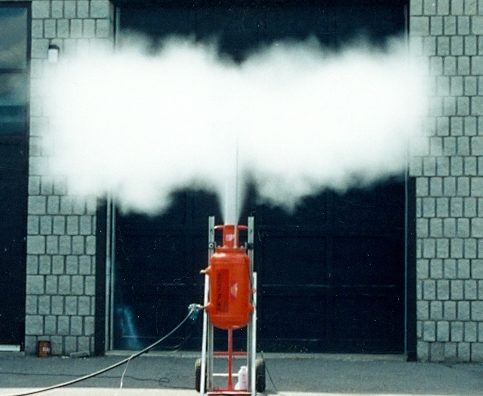The animal kingdom has had millennia to develop complex mechanisms to identify and localize airborne odors. And although humans have had a considerably shorter time to develop our own chemical-sensing technologies, these tools are fundamental to many applications, from public safety to environmental monitoring to olfaction research.
Case-in-point: the 200B miniPID photoionization detector. Its range of applications is broad, as is the list of researchers who use it – the miniPID has been used by the US Army, private companies and numerous universities including a pair of Nobel Laureates.
Two recent case studies are presented below, highlighting diverse lines of research enabled by the miniPID.
Spatiotemporal information preservation in turbulent vapor plumes
The forces governing the movement of chemicals through the air are complex. Particles in the air are constantly jostled around by surrounding molecules, and modeling these dynamics is computationally demanding. This complexity makes it difficult to study the constraints of chemical sensing in turbulent conditions.
Despite this challenge, Kennedy et al. from the Brown University School of Engineering recently published a paper exploring the preservation of information—the identification of isopropyl alcohol in this case—in temporally controlled odor plumes under turbulent conditions.
For their experiments, they set up a smooth pipe, with a fan at one end and four miniPIDs at various positions at the other:Isopropyl alcohol (IPA) was injected close to the fan and perpendicular to the air flow. Using periodic IPA emissions and under increasingly turbulent conditions, they made PID sensor recordings. A number of variables were tested: large path distances, dilute concentrations, time varying wind speed and obstacles.
Interestingly, they found that turbulent conditions can more accurately detect analyte compared to laminar conditions. In addition, the temporal control of analyte and the use of multiple miniPID sensors also significantly improved detection, and that precise modulation of wind velocity can be used to optimize the rate of preserved information.
Concluding the paper, the authors write,
“This raises interesting possibilities for the identification of optimally preserved patterns in a turbulent environment.”
Elementary sensory-motor transformations underlying olfactory navigation in walking fruit-flies
For many animals, odor attraction is critical for survival. For researchers, odor attraction in Drosophila is a useful system to relate neural function to behavior. However, the underlying mechanisms behind this attraction remain unclear. Neurologically, how do animals compute the continuous fluctuation of odor concentration within a turbulent plume, and how does that translate to behavior?
A combined team of researchers from New York University, University of Colorado Boulder and Weill Cornell Medicine set out to answer this question. They developed a high-throughput assay to measure behavior in Drosophila in response to the controlled delivery of an odor.
They built the arena as a mini wind tunnel constraining the flies to walk under a glass top fitted with cameras to track their positions. Constant air flow defined the wind direction, and just downstream the researchers delivered the odor (ethanol or apple cider vinegar in this case), through inlets controlled by a 3-way solenoid valve. This produced an odor plume travelling downwind whose concentrations and dynamics could be well-defined by the miniPID.
Supported by data collected using the PID, the team demonstrated that odor localization in walking Drosophila melanogaster depends on two distinct behaviors. In response to the onset of an odor, they run upwind. If they lose the scent, they conduct a local search driven entirely by odor; they increase their rate of turning and literally follow their nose to pick up the scent again. Based on these two behaviors, they also developed a computational model describing the relationship between wind speed, odor concentration and forward and angular velocity.
They conclude,
“Our description of olfactory navigation algorithms in walking flies, and the resulting computational model, provide a quantitative framework for analyzing how specific sensory-motor transformations contribute to odor attraction in a complex environment, and will facilitate the dissection of neural circuits contributing to olfactory behavior.”




